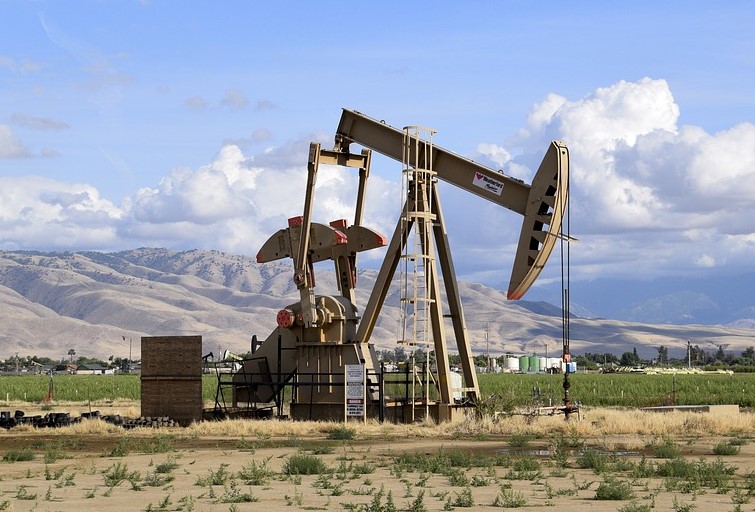By Romany Webb
 On Friday, November 22, the Sabin Center submitted comments opposing an Environmental Protection Agency (“EPA”) proposal to rescind regulations limiting methane emissions from new oil and natural gas facilities (the “Methane New Source Performance Standards” or “Methane NSPS”). The primary component of natural gas, methane is emitted throughout the oil and gas production process, primarily through accidental leaks and intentional venting. The emissions make a significant contribution to climate change because methane is a highly potent greenhouse gas which, in the first 20 years after it is released, traps approximately 84 times more heat in the earth’s atmosphere than carbon dioxide (on a per ton basis). Methane also contributes to the formation of ground-level ozone which is itself a heat-trapping greenhouse gas and, when inhaled by humans, can trigger a variety of health problems from throat irritation and coughing to bronchitis, asthma, and reduced lung function.
On Friday, November 22, the Sabin Center submitted comments opposing an Environmental Protection Agency (“EPA”) proposal to rescind regulations limiting methane emissions from new oil and natural gas facilities (the “Methane New Source Performance Standards” or “Methane NSPS”). The primary component of natural gas, methane is emitted throughout the oil and gas production process, primarily through accidental leaks and intentional venting. The emissions make a significant contribution to climate change because methane is a highly potent greenhouse gas which, in the first 20 years after it is released, traps approximately 84 times more heat in the earth’s atmosphere than carbon dioxide (on a per ton basis). Methane also contributes to the formation of ground-level ozone which is itself a heat-trapping greenhouse gas and, when inhaled by humans, can trigger a variety of health problems from throat irritation and coughing to bronchitis, asthma, and reduced lung function.
Recognizing the environmental and public health risks posed by methane, in January 2015, the Obama administration set a goal of reducing emissions from the oil and gas industry by 40 to 45 percent below 2012 levels by 2025. That goal was to be achieved, in part, through stricter regulation of methane emissions under section 111 of the Clean Air Act (“CAA”) (42 U.S.C. § 7411). Briefly, section 111 of the CAA requires EPA to regulate stationary sources that “cause[], or contribute[] significantly to, air pollution which may reasonably be anticipated to endanger public health or welfare” (“dangerous air pollution”). Section 111(b) provides for the adoption, by EPA, of NSPS for new and modified stationary sources of dangerous air pollution. Once NSPS are adopted with respect to a particular type of stationary source, EPA is required, under section 111(d), to issue regulations controlling emissions from existing sources of the same type (subject to limited exceptions).
Acting pursuant to section 111(b) of the CAA, EPA finalized the methane NSPS in June 2016. At the same time, EPA also issued an information request to oil and gas companies, seeking data needed to develop regulations for existing facilities under section 111(d). That request was withdrawn by the Trump administration in March 2017. The following month, at President Trump’s direction, EPA commenced a review of the methane NSPS. As previously reported on this blog, EPA initially proposed revising the methane NSPS to, among other things, weaken the leak detection and reporting requirements therein. Now, EPA is proposing to go even further, and entirely rescind the methane NSPS. That would have far reaching consequences, eliminating the methane controls currently imposed on new and modified facilities, and obviating the need for EPA to adopt new controls for existing facilities. (It should be noted that, while new oil and gas facilities would remain subject to NSPS for volatile organic compound (“VOC”) emissions, those standards do not trigger regulation of existing sources under section 111(d). That is because section 111(d) only applies to air pollutants for which air quality criteria have not been issued or which are not subject to National Ambient Air Quality Standards (“NAAQS”). Because VOCs are precursors to ozone and particulate matter, for which NAAQS have been established, the adoption of VOC standards does not trigger section 111(d).)
EPA’s purported justifications for rescinding the methane NSPS do not withstand scrutiny. As explained in our comments:
- Section 111(b) directs EPA to promulgate NSPS for categories of stationary source that have been found to cause or contribute to dangerous air pollution. EPA claims that such a finding has only been made with respect to oil and natural gas production and processing facilities. Thus, in EPA’s view, the methane NSPS cannot be applied to transmission and storage facilities. That view is, however, refuted by EPA’s own documents. The documents clearly show that, when EPA listed “Crude Oil and Natural Gas Production” as a source category under section 111(b), it intended to capture the entire oil and natural gas industry. EPA has, until now, consistently interpreted the listing decision as applying industry-wide. EPA has offered no explanation for its sudden change in approach.
- EPA also erroneously asserts that the methane NSPS is unnecessary because oil and gas facilities are subject to other standards (e.g., governing VOCs) and steps taken to comply with those standards will also reduce methane emissions. Just three years ago, however, EPA concluded that the existence of other standards does not eliminate the need for the methane NSPS. In fact, EPA determined that the extent of methane emissions from the oil and gas industry, and the risks posed by those emissions, rendered adoption of the NSPS both necessary and appropriate.
- EPA has sought to downplay the need for the methane NSPS, and equivalent regulations targeting existing facilities, including by including by arguing that companies have “market incentives” to reduce methane emissions by capturing natural gas. That is not always the case, however. Transmission pipeline operators, for example, pass the cost of lost gas onto shippers and thus face no financial pressure to reduce losses. (See our previous blog on the topic here.) Other operators who would benefit financially from reducing losses are often reluctant to invest in gas capture systems, e.g., because of the high upfront cost of such systems. State regulations often do not require the use of such systems.
- Finally, while EPA acknowledges that rescinding the methane NSPS would increase emissions, it devalues the climate impacts of that increase. To value the impacts, EPA uses a domestic-only social cost of methane, which accounts solely for climate change impacts within the U.S. EPA ignores impacts occurring overseas, despite having previously admitted that such impacts “will also have relevant consequences on the U.S. and our citizens.”
Click here to read our comment letter in full. Further information about EPA’s methane NSPS is available here. Other federal regulations targeting methane emissions from the oil and gas industry are discussed here.




